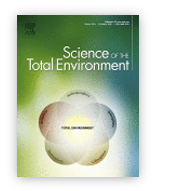Cryoconite – From minerals and organic matter to bioengineered sediments on glacier's surfaces
Piotr Rozwalak, Paweł Podkowa, Jakub Buda, Przemysław Niedzielski, Szymon Kawecki, Roberto Ambrosini, Roberto S. Azzoni, Giovanni Baccolo, Jorge L. Ceballos, Joseph Cook, Biagio Di Mauro, Gentile Francesco Ficetola, Andrea Franzetti, Dariusz Ignatiuk, Piotr Klimaszyk, Edyta Łokas, Masato Ono, Ivan Parnikoza, Mirosława Pietryka, Francesca Pittino, Ewa Poniecka, Dorota L. Porazinska, Dorota Richter, Steven K. Schmidt, Pacifica Sommers, Juliana Souza-Kasprzyk, Marek Stibal, Witold Szczuciński, Jun Uetake, Łukasz Wejnerowski, Jacob C. Yde, Nozomu Takeuchi, Krzysztof Zawierucha
Agronomy for Sustainable Development
Ministerial score = 200.0
JIF Impact Factor (2020) = 7.963
 Cryoconite is a mixture of mineral and organic material covering glacial ice, playing important roles in biogeochemical cycles and lowering the albedo of a glacier surface. Understanding the differences in structure of cryoconite across the globe can be important in recognizing past and future changes in supraglacial environments and ice-organisms-minerals interactions. Despite the worldwide distribution and over a century of studies, the basic characteristics of cryoconite, including its forms and geochemistry, remain poorly studied. The major purpose of our study is the presentation and description of morphological diversity, chemical and photoautotrophs composition, and organic matter content of cryoconite sampled from 33 polar and mountain glaciers around the globe. Observations revealed that cryoconite is represented by various morphologies including loose and granular forms. Granular cryoconite includes smooth, rounded, or irregularly shaped forms; with some having their surfaces covered by cyanobacteria filaments. The occurrence of granules increased with the organic matter content in cryoconite. Moreover, a major driver of cryoconite colouring was the concentration of organic matter and its interplay with minerals. The structure of cyanobacteria and algae communities in cryoconite differs between glaciers, but representatives of cyanobacteria families Pseudanabaenaceae and Phormidiaceae, and algae families Mesotaeniaceae and Ulotrichaceae were the most common. The most of detected cyanobacterial taxa are known to produce polymeric substances (EPS) that may cement granules. Organic matter content in cryoconite varied between glaciers, ranging from 1% to 38%. The geochemistry of all the investigated samples reflected local sediment sources, except of highly concentrated Pb and Hg in cryoconite collected from European glaciers near industrialized regions, corroborating cryoconite as element-specific collector and potential environmental indicator of anthropogenic activity. Our work supports a notion that cryoconite may be more than just simple sediment and instead exhibits complex structure with relevance for biodiversity and the functioning of glacial ecosystems.
Cryoconite is a mixture of mineral and organic material covering glacial ice, playing important roles in biogeochemical cycles and lowering the albedo of a glacier surface. Understanding the differences in structure of cryoconite across the globe can be important in recognizing past and future changes in supraglacial environments and ice-organisms-minerals interactions. Despite the worldwide distribution and over a century of studies, the basic characteristics of cryoconite, including its forms and geochemistry, remain poorly studied. The major purpose of our study is the presentation and description of morphological diversity, chemical and photoautotrophs composition, and organic matter content of cryoconite sampled from 33 polar and mountain glaciers around the globe. Observations revealed that cryoconite is represented by various morphologies including loose and granular forms. Granular cryoconite includes smooth, rounded, or irregularly shaped forms; with some having their surfaces covered by cyanobacteria filaments. The occurrence of granules increased with the organic matter content in cryoconite. Moreover, a major driver of cryoconite colouring was the concentration of organic matter and its interplay with minerals. The structure of cyanobacteria and algae communities in cryoconite differs between glaciers, but representatives of cyanobacteria families Pseudanabaenaceae and Phormidiaceae, and algae families Mesotaeniaceae and Ulotrichaceae were the most common. The most of detected cyanobacterial taxa are known to produce polymeric substances (EPS) that may cement granules. Organic matter content in cryoconite varied between glaciers, ranging from 1% to 38%. The geochemistry of all the investigated samples reflected local sediment sources, except of highly concentrated Pb and Hg in cryoconite collected from European glaciers near industrialized regions, corroborating cryoconite as element-specific collector and potential environmental indicator of anthropogenic activity. Our work supports a notion that cryoconite may be more than just simple sediment and instead exhibits complex structure with relevance for biodiversity and the functioning of glacial ecosystems.
DOI:10.1016/j.scitotenv.2021.150874









